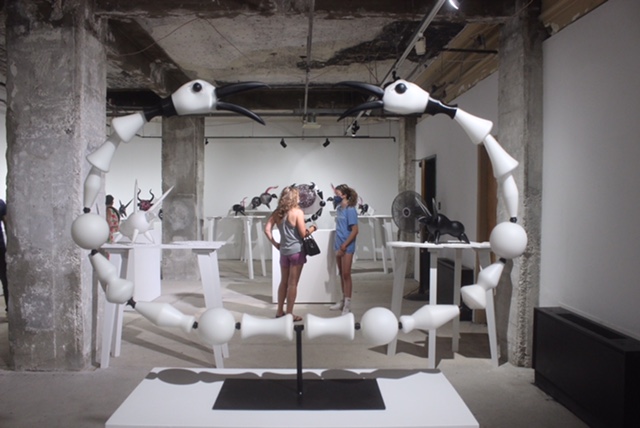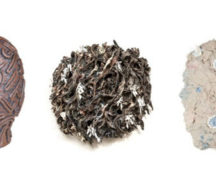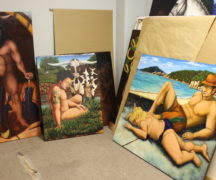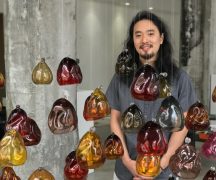By DAVID DUPONT
BG Independent News
River House Arts in downtown Toledo is through the end of the month showcasing the new generation of artists.
That includes recent Master of Fine Arts graduates from Bowling Green State University as well as two MFA students and a recent graduate from the Cleveland Institute of Art.
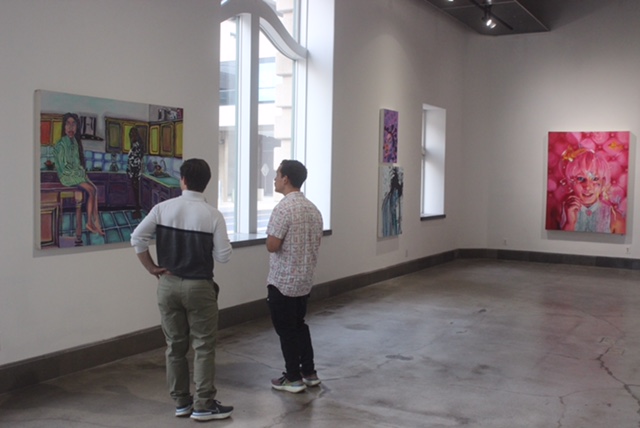
While the kaleidoscopic work of Cleveland artists Ewuresi Archer, Crystal Miller, and Samatha Schneider is featured in “Waking Dream” in the main downstairs gallery, it’s worth heading upstairs to see the paintings of Amber Koprin in “Lawn” on the sixth floor gallery and the sculptural glass if Theo Brooks in “Ritual Relations” on the second floor.
The shows are on exhibit in galleries in the Secor Building, 425 Jefferson St., Toledo, through Oct. 1. Call 419-441-4025 or click here to schedule an appointment.
Emotional weight-bearing images
The chance for Koprin to show her work is especially welcomed.
She received her MFA in spring 2020 when the galleries were closed because of the pandemic. Viewing digital images of her paintings does not do them justice.
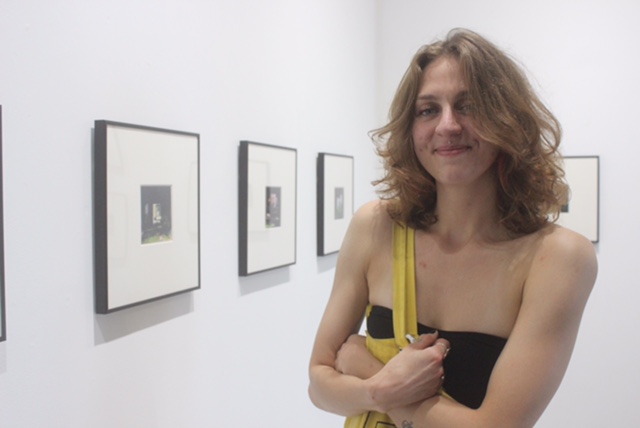
Each painting is a small intense image of a house at night. They were inspired by Koprin and her twin sister’s night walks observing houses. They admired the ones with vinyl siding. No these were not mansions, unless you don’t have your own home.
Their childhood home, Koprin, 27, said, had vinyl siding. When she was a junior in high school the family was evicted. Even now she said, when she wants to get together with the man who helped raise them — their guardian has since died — they have no home to meet in, no kitchen to cook dinner.
That transient existence has changed the direction of her work.
She had been planning to create sculptures out of vinyl siding, but then the pandemic upended her living arrangement. She had no place to store her materials so she had to discard them. At some point, she said, she hopes to return to sculpture. “It’ll be a while before I get there.”
For now she has a single room that she shares with her two cats. So her materials must be packed away every night. Koprin is trying to find a second job so she can rent a space to work.
In her work she draws on what she learned in a printmaking class with Janet Ballweg. The experience of tightly focusing the image helped shape her paintings of houses.
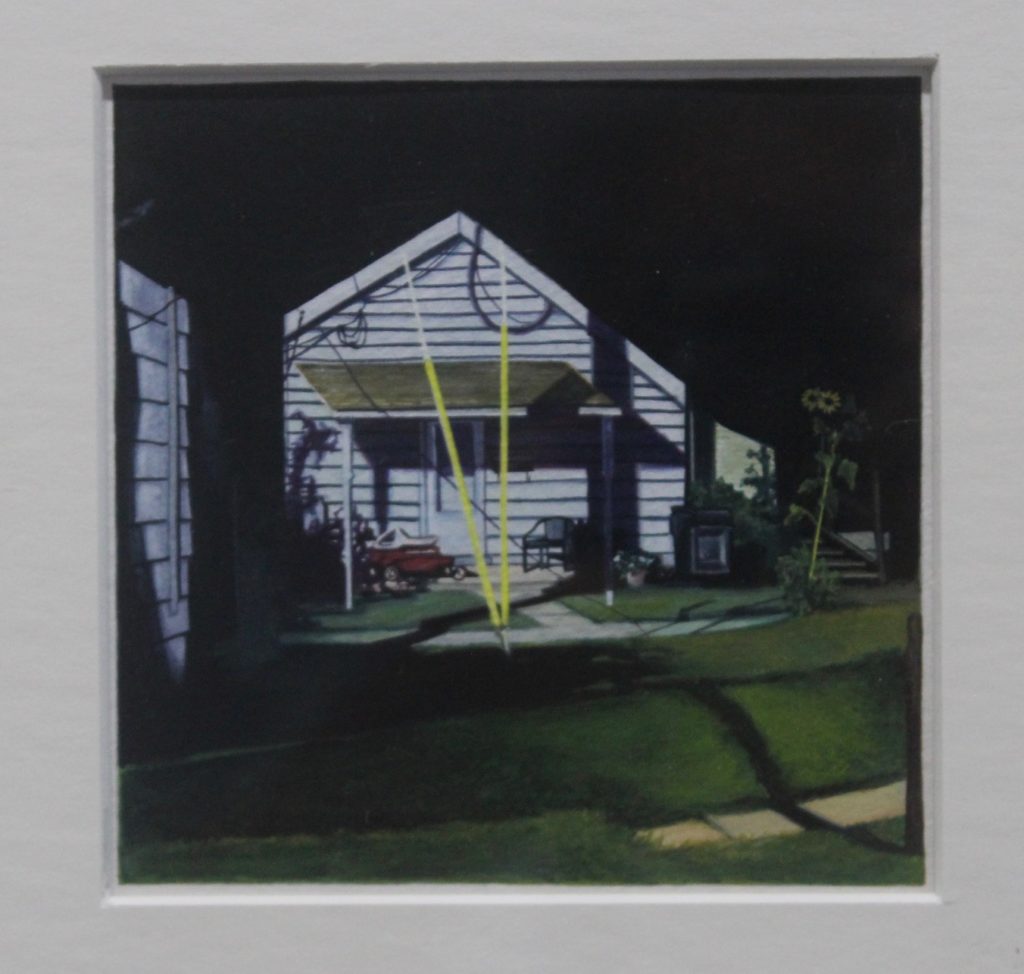
“The house bears the weight and pain,” she said “It’s such a strong structure that holds all our good days and bad days. With the housing crisis so many people don’t have a house ,yet there’s so much space in general if we made changes.”
All that’s needed is a patch of grass, and some vinyl siding.
Echoes of the Bronze Age
Theo Brooks has led a transient life by design. At 32 the London native has worked in Paris, Wales, and Canada before coming to Bowling Green to earn his masters. Now he’s in Philadelphia where he is working as a glass technician at Temple University.
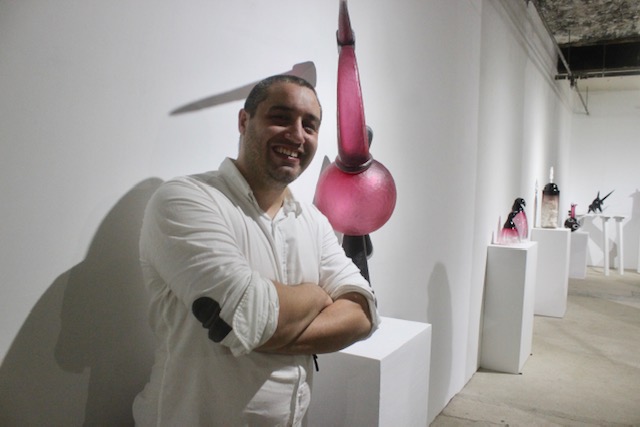
His father was English, and his mother is from Cyprus. Though they made their home in London it was a Cypriot household – his maternal grandmother lived with them, and didn’t speak English.
While he did visit Cyprus as a child, they were family visits, moving from household to household. It wasn’t until several years ago, before starting his graduate work that he discovered the depths of Cypriot culture.
A visit to the Cyprus museum exposed him to the ancient, Bronze Age artifacts at would inspire the glass sculptures he created at BGSU.
His previous work was centered on making vessels in the workshops of established glass blowers.
Coming to Bowling Green allowed him the resources and freedom to put his experience to a personal reflection on the 4,000-year-old art he discovered and researched in Cyprus. “It’s a way of me connecting with my history.”
The ancient vessels were ceramic and bronze, predating the development of glass blowing. Most were used in religious rituals.
When he first arrived in Northwest Ohio, before he started his studies at BGSU, he attended a workshop at the Toledo Museum of Art Glass Pavilion with Grant Garmezy who creates animal forms.
At BG, where he worked as a technician in glass and metals, he developed the germ of the idea planted by his studies in Cyprus and the workshop.
“It really changed my perspective of the way you can work with glass,” he said. “I come from a production background, working for vessels makers. … I was exposed to this different style of sculpting that … enabled me to explore some of the themes that are more personal to me in a deeper way.”
He credited BGSU faculty Alli Hoag for guidance on developing his concept, and Joe O’Dorisio with assisting with technical problems.
Brooks understands the context of his vessels and images of cows and birds is very different from those of craftsmen in the Bronze Age. “I’m not going to sacrifice a cow in my studio,” he said. “Not yet at least.”
It is important to preserve these images, which even his Cypriot family knew nothing about.
“For me, it’s kind of endless source of inspiration.”
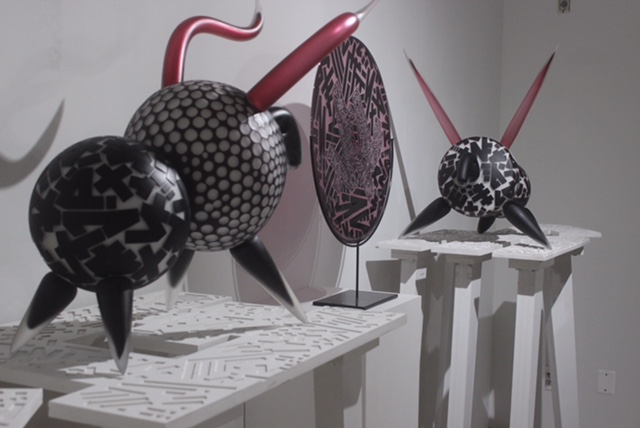
That results in pieces that capture the qualities of glass – the way it glows, reflects the light, and yet is translucent.
He even fantasies about what the reaction of artists 4,000 years from now would be if they discovered his work. He imagines it would be the same as his reaction on discovering the Bronze Age vessels. “Let’s see if we can replicate these and put their own spin on them. It’s a fun concept.”
And how would his Bronze Age ancestors would react to his work? “They wouldn’t have a clue about the process and material,” Brooks said. But he is “still exploring the same themes.”
He would love to have his work shown side by side with those ancient objects. “I have a dream of being shown in Cyprus,” he said “That would be awesome.”

